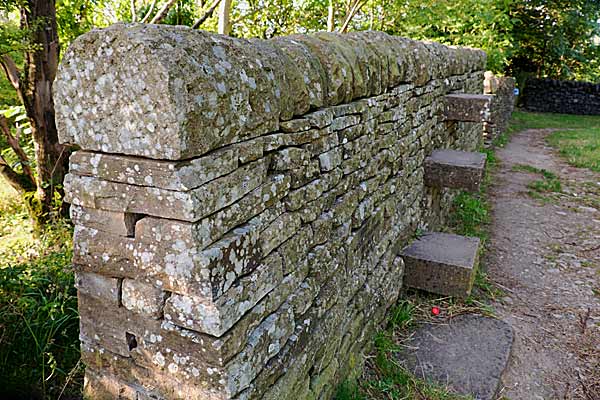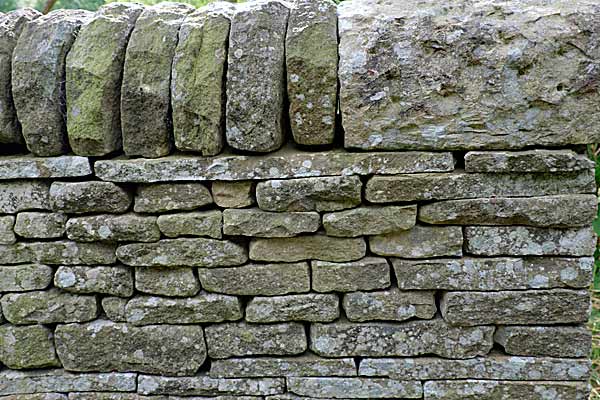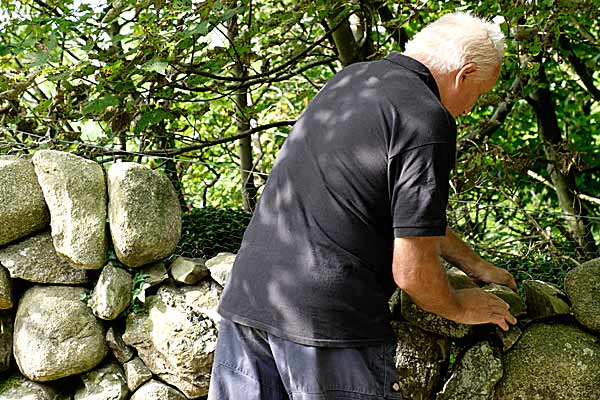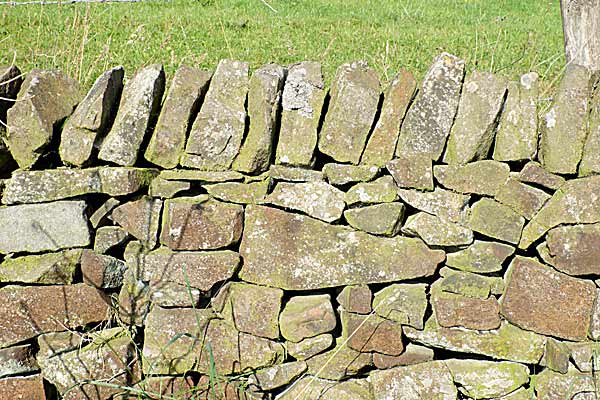Dry Stone Walls in Derbyshire
To most people dry stone wall are just there. They are something you drive past without noticing, dividing up the fields and stretching off into the distance. Dry stone walls have provided protection and shelter for valuable livestock from the elements and the native wildlife and flora. It is now over 200 years since dry stone walls became a permanent feature of the landscape, a testament to their durability and the skill of the men who built them. Tens of thousands of miles of wall exist in the UK alone.

National Stone Centre | 
National Stone Centre
|

National Stone Centre | 
National Stone Centre
|

National Stone Centre | 
Stone wall at Hartington
|
Dry stone walling is a building method by which walls are constructed from stones without any mortar to bind them together. They are stable because of their unique construction method which will vary, depending on the type of stone available, its intended use and local tradition.
Generally a foundation is laid across the base of the wall. Parallel walls are constructed on either side of the foundation, and these are wider at the base than at the top. At certain points, there are flat stones which stretch across the whole width of the wall, and sometimes the top few courses have three stones which form a horizontal ‘key’ and interlock. The centre of the wall is filled with small stones and rubble, so that water can drain away.
Older walls tend to be constructed from stones and boulders cleared from the fields during preparation for agriculture but many also from stone quarried nearby. For modern walls, quarried stone is almost always used.
For more information nationwide, please see Dry Stone Walling Association of Great Britain. The main aims of the Association are to promote a greater understanding and knowledge about the traditional craft of dry stone walling and to encourage the repair and maintenance of dry stone walls throughout the country.
For more local information, please see Dry Stone Walling Association for Derbysire. They hold inexpensive short courses in dry stone wall building throughout the year. The courses are largely run from the National Stone Centre
which is set within six former limestone quarries in the heart of the Derbyshire Dales, on the edge of the Peak District National Park, and close to the Derwent Valley Mills World Heritage Site. The National Stone Centre (NSC) is a 40 acre Site of Special Scientific Interest offering outdoor and indoor activities for all with
• Outdoor fossil trails around our free to access site
• Visitor Centre with shop, café and “Building Britain” Exhibition
• Geo walks and picnic areas
• Childrens play area
• Courses on Dry stone walling
The National Stone Centre at Middleton by Wirksworth is also home to the
MILLENNIUM WALL,
a permanent exhibition composed of eighteen sections of wall, each six metres in length, and forms the most extensive known collection of dry stone walls in any one place.
A documentary dvd is now available called "If Walls Could Talk - Dry Stone Walling , a hidden history". It tells the stories of dry stone walls, what secrets they hold and the wallers who built them. It includes interviews with members of DSWA Derbyshire branch and showcases beautiful imagery of Derbyshire landscapes.
The dvd is produced by Lost Histories & Theodore Films , both local film companies. More at www.losthistories.co.uk
|